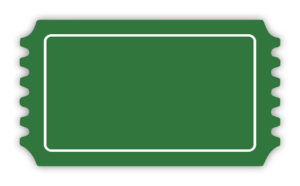BROOKLYN INSTITUTE OF ARTS AND SCIENCES [BIOAS]
The history of the Brooklyn Institute of Arts and Sciences [BIOAS] is a story about a fledgling city, Brooklyn, and its early leaders’ vision to mold Brooklyn into a cultural capital. Of course, these efforts pre-dated the amalgamation of Brooklyn into one of New York City’s five boroughs. Eventually, BIOAS became part of a mid-1800’s Public-Private Partnership [PPP] that led to the creation of New York City’s Park Education Campus [PEC], which included the BIOAS departments [see PUBLIC-PRIVATE PARTNERSHIP, PARK INSTITUTIONS and FINANCIAL ANALYSIS.]
The Brooklyn saga begins with the incorporation of the Brooklyn Institute [BI, Chapter 343 of the Laws of New York of 1862], which was the predecessor enterprise that morphed into BIOAS through Chapter 172 of the Laws of the State of New York of 1890. Chapter 172 authorized the trustees and board of directors of BI to “assign and convey to the Brooklyn Institute of Arts and Sciences [BIOAS], all the property, real and personal, owned and held by it …;” and as to BIOAS, to “provide the means for popular instruction and enjoyment through its collections, libraries and lectures.” Chapter 172 initially breathed life into BIOAS with the inclusion of the Brooklyn Museum [BM] and the Brooklyn Children’s Museum [BCM].
Therefore, BM and BCM must be held to the BIOAS provisions of Chapter 172 of the Laws of the State of New York of 1890 and Section 3 which provides among other things “open and free [access] to the public and private schools of [New York] city at all reasonable times…” [as evidence that BM and BCM are BIOAS entities today, see B.7, B.8 and B.9 in LIST OF REFERENCES – HISTORY OF BIOAS below evidencing that each of the names “Brooklyn Museum” and “Brooklyn Children’s Museum” is an “Assumed Name” of BIOAS].
Because Chapter 172 of 1890 only provided for the establishment of “museums and libraries of art and sciences,” two amending Chapters incorporated a botanic garden and performance center; to wit, Chapter 509 of the Laws of the State of New York of 1897 amended Chapter 172 of 1890 and authorized BIOAS to expand its “Brooklyn Public library … [to include] establishing and maintaining thereon of a botanic garden and arboretum …” and Chapter 87 of the Laws of the State of New York of 1934 amended Chapter 509 and broadened the scope of BIOAS’s purpose to provide for “popular instruction and enjoyment through … musical and other performances.” [emphasis added]
Chapter 509 grew to be the Brooklyn Botanic Garden [BBG] of BIOAS and Chapter 87 actualized the Brooklyn Academy of Music [BAM] as a BIOAS department. Noteworthy to Chapter 509, is that Chapter 509 incorporated a “stand-alone” botanic garden and arboretum and not a BBG as a BIOAS department and when Chapter 509 was amended by Chapter 618 of the Laws of the State of New York of 1906 and Chapter 178 of the Laws of the State of New York of 1911, free access provisions conflicted with the free access provisions applicable to BBG as a BIOAS department. Yet none of New York City leaders, New York State legislators or BBG-BIOAS custodians undertook to codify New Yorkers’ free access rights [see A.4 and A.5 in LIST OF REFERENCES – HISTORY OF BIOAS below].
Further, BBG and BAM dissolved their connection with BIOAS. BAM did so in 1971 and BBG did so in 1977 [see Introductory paragraph, BAM’s Current and Past Leadership for the former and New York State Division of Corporations (BBGC) for the latter]. Nonetheless, both BAM and BBGC continue to advantage BIOAS’s PPP economic benefits. All told, BIOAS entities have accepted approximately $190 MILLION in direct and indirect New Yorker subsidies for years ending 2017 and 2018, with an anticipated additional $50 MILLION infusion in 2021 to BM [see Sarah Bahr reported in The New York Times that, “Brooklyn Museum to Receive $50 Million Gift From City of New York: The funding will be the largest capital investment in the museum’s nearly 200-year history.”] [see PARK INSTITUTIONS and FINANCIAL ANALYSIS.]
Through its Cultural Institutions Unit, [CIGs] New York City’s Department of Cultural Affairs [DCA] oversees the operations, including funding for capital and expense budgets, of 34 member- institutions making up DCA’s CIGs. Each of BM-BIOAS, BCM-BIOAS, BBG/BBGC and BAM are CIGs members. It is troubling, therefore, that the City of New York, through the Commissioner of the DCA, entered Agreements disavowing New York State law and/or contracts diminishing benefits provided to New Yorkers in initial contracts and laws, despite City leaders continuing the subsidize the PPP/PEC institutions – including the BIOAS entities – with $1 BILLION in direct and indirect subsidies annually [see D.15 in LIST OF REFERENCES – PPP and FINANCIAL ANALYSIS.]
Review the evidence supporting the information on this PPP/PEC institution’s summary sheet.
Consider FA’s comprehensive research organized by topic.

